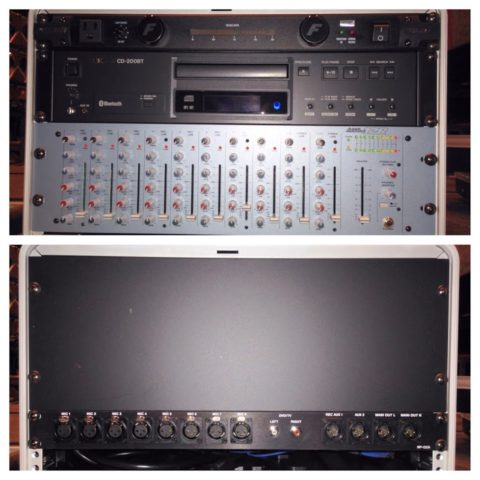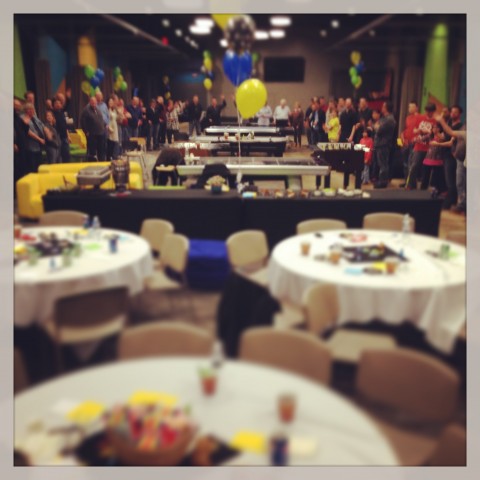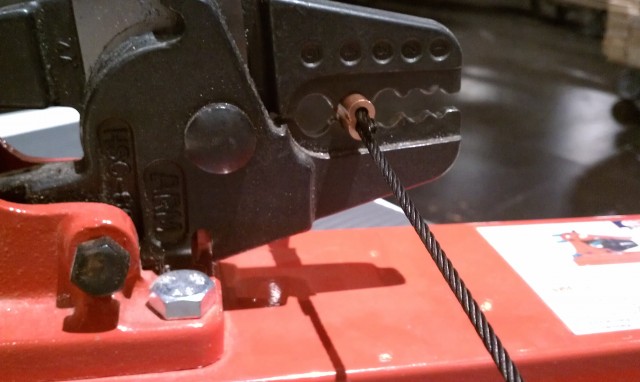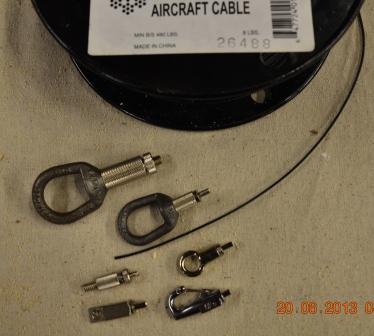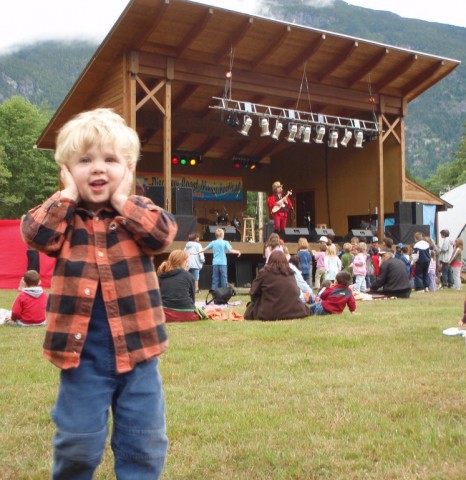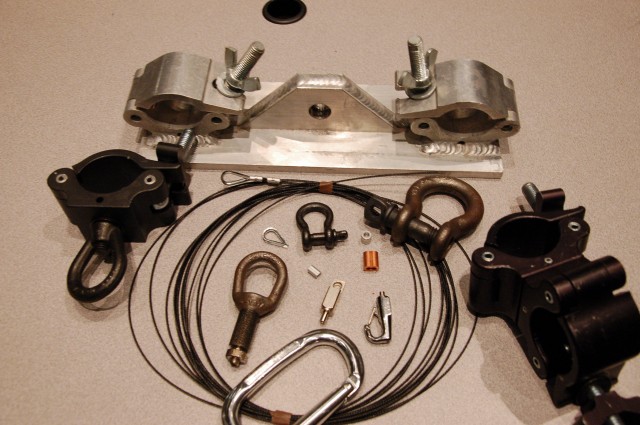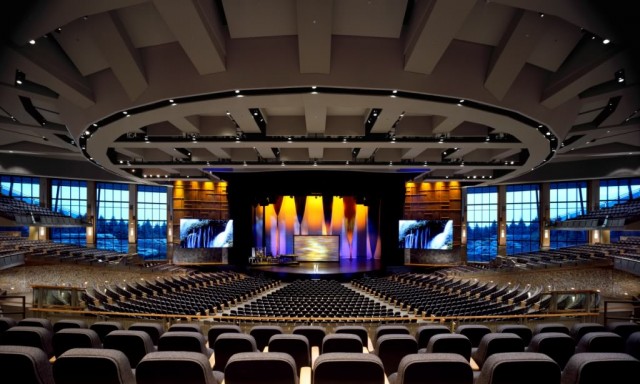
Homebrew4
Welcome to Willow Production!
Willow Creek is a church committed to loving everyone always and extending the hope and grace of Jesus to our neighbors near and far. As a production department, our volunteers and staff support this mission through creating dynamic experiences and distraction-free environments to help our church family thrive.
We have have a unique setup at Willow where we have a team called Campus Care and they do more than just clean the facility and take out the trash. One of their major roles is to provide AV support for venues in our building that don't have permanent audio and video systems. For about 10 years, this team has been working with about 7-8 audio systems that consisted of an Allen & Heath mixer and a CD and or tape player. These racks were in a large rolling cart that would be moved around the building. For speakers, they had Mackie 450s with Ultimate Support stands. These systems provided great support for many years, but over time started to fail, faders were broken, outputs crackling, speakers buzzing; it was time to give that team an overhauled system. There were several goals when thinking about a new solution, cost-effective so
Read More
These are my notes from a talk I gave at our annual production volunteer celebration. We have an amazing team and I am honored to get to be the one to encourage them. A couple of years ago I thought it would be great to make contact with the original TD for Willow Creek. After asking around, I got a hold of Rick Meredith, who still lives in the area. Here's a picture of what production looked like back then. While driving to Denny's in Arlington Heights to have lunch with him, I kept imagining all the questions I was going to ask him and all the amazing answers he was going to give me. In the early days, what were your original production values? Where did the idea of excellence in production come from? Did you sit down and come up with a mission statement? Once we got to
Read More
We've tried VidCAD and Visio, but Visio lacked the features that we wanted & VidCAD was very complicated. So, several years ago we tried out WireCAD as is was a true CAD wiring software with a fairly easy learning curve. We like it because it had a reasonable price, easy to use, online tutorials, great support and the best feature was the ease in building equipment blocks. WireCAD is a true wiring schematic software program. Sure, it can open any DWG file, but it's main use is for wiring signal flow diagrams. We started out making easy signal flow drawings, and now we do al lour system documentation inside WireCAD. It keeps things organized , creates cable labels, does rack elevations and even patchbay layouts. I would say that it's not as easy to use as Visio, but onc eyou get the hang of signal flow and how everything flows
Read More
I was going back through my notes on some of the production staff meetings we've had over the years, and came across the very first value we talked about: be flexible. In that era, I had been having quite a few conversations with our creative arts team and our pastors about the production team being flexible, and so it was something I thought worth talking about as a team. Fast forward 5 years and it was still a relevant conversation at our latest staff meeting. So what does "be flexible" mean? If I want to be flexible in the moment, during a service when something unplanned for happens, I need to be prepared with everything else as much as I can. This means a couple of things. One is, whatever I can know, I want to, and I want to know it on Thursday (or some day that isn't when
Read More
System Update 2016 - We now have a new Digital Asset Management system installed. Here's a link to another post about the project. We often get asked "How does Willow organize & archive all the video content it produces?" Well, we use a Digital Asset Management system. This system consists of a server with lots of backend stoarge to hold all the video archives. The managament part is a web based software interface that users log in and uploads, organizes & downloads content as needed. I won't talk about the specific product that we use, because it is no longer available & we, like some of you are currently looking for a new system to replace our aging system. The bad news about these types of systems is that they range in price from a few thousand dollars for a simple software only system to over a $100K for
Read More
The way I see it the stage world just looks better when you have more options toward supporting or flying scenery. At Willow Creek Church, suspending scenery is very common. At times, we may create over 100- 32’x 1/16” cable drops to suspend a certain weekend look that weighs a few thousand pounds. Even though it’s a lot of detailed work with the risk involved, I’m comfortable at the frequency of the process. Creating cable ends with aircraft cable doesn’t have to be scary stuff. It can be quick and reliable when properly using the correct techniques, crimping tool and hardware. Let’s unpack some information and quickly eliminate some of your fears. Tools There are many great crimping tools on the market including the hand swage tools, cordless and hydraulic. One of my favorite crimping tools for under $300 is the bench model crimper. Http://www.stageriggingonline.com/hsbemoswto.html. I’ve used this model for
Read More
I’ve been hearing a lot lately from individuals who are working hard at scenic creativity that are disappointed there is very little information toward tips on rigging and rigging hardware. Almost every scenic project requires the suspension of some sort of scenic element that echoes back scary and dangerous. Which leads me to the question that all of us ask sometime in our scenic life, why does suspension of scenery have to be so hard? It’s consistently clear that gravity always seems to demonstrate why it is the most powerful force in the universe. And if that were not enough to deal with, our funny little brain is designed to repeat whatever we’ve already done and prefer it that way, even if you’re doing things the hard way. Scenic life can be soooo stressful! Consistently invest in yourself, constantly improving your skills, techniques and knowledge of hardware accessories will make
Read More
In part one of this post, I talked about making sure you know what you are trying to do in your services and how volume fits into that. This is a leadership question, more than a dB question. As a church, what is your goal for the service? How loud it gets will be a part of that answer. In this post we are going to take a look at a different aspect of the “perfect volume”: the appropriate volume at the appropriate time. In your service and in mine, there are moments that need to be loud, and there are moments that need to be quiet. Here are a few examples from my current experience: Beginning of the service When people first walk in, we tend to want to grab them with a high energy song; something that people can really engage with. The trick with this is high
Read More
I get a lot of questions about how loud we run our services at Willow Creek. I always find it difficult to give a standard answer. Much of that comes from the fact that I think in terms of grey, as opposed to black and white. Each situation is different, so I tend to give the answer, “It depends”. Audio volume is so subjective and dependent on so many factors. Saying that there is a perfect volume level, or a maximum not to exceed, is ridiculous to me. What isn’t ridiculous to me is the reality that not many people are willing to do the difficult work to figure out what is the right volume for your church. Know what you are trying to do. At every church, in every environment, it is important to know what you are trying to accomplish. It is important to know this before you
Read More
If you were to ask people attending a weekend service or event, “When or how did a live scene change on stage in the dark?” Most people would not have a clue. Unnoticed and in charge of more things than anyone else in a live production, is one of the most valuable production individuals on the team, the Stage Manager. They are the Black Ops commander of the stage. They are so top secret; most individuals that attend a church service see them rarely. Very few know that a SM has super night vision capability, able to see in pitch blackness in order to move scenery to a destination. They are able to leap from behind a curtain in a split second, like a stealth bomber, dropping an arsenal of fresh batteries in a wireless microphone and disappear. They refer to pieces of equipment like they were people with feelings.
Read More
I read an article recently that said, “Gravity is a contributing factor in nearly all accidents involving fallen objects.” Even though, that is a pretty humorous statement, the fact is it takes a lot of overwhelming work to overcome gravity. When it comes to rigging “probably” or “maybe” safe, is not the most reassuring words either. Things fall down unless we take preventive steps to prevent them from doing so. Rigging suspended scenery, truss, lighting, curtains and screens depend on top quality hardware, materials and the know-how. Knowing the basic structural properties of any materials used for rigging is critical to understand. Safety, reliable training, inspection, personal responsibility and efficiency are high values we must hold to. The biggest challenge and what will actually be the back bone of rigging is being aware of trustworthy hardware and the working load limits. Buy rigging hardware from companies that specialize in rigging
Read More
The window shades in our Main Auditorium are custom made shades on motorized lines hafts controlled by iRig software. We have ten very large windows in our Main Auditorium, five on each side of the stage. Each window is approximately 14 feet wide by 40 feet tall. The sides of the window openings were fitted with a metal channel that runs the length of the window, on each side from top to bottom. This channel creates a light lock for the edge of the rolling window shade to fit into, thus keeping sunlight from peeking in between the fabric shade & the edge of the window. It works very well. The window shades are hand sewn fabric panels with a thick fabric backing to prevent light penetration. These hand sewn panels were then fitted onto a motorized lineshaft custom fitted to the window width. A software program called iRig is used to
Read More


